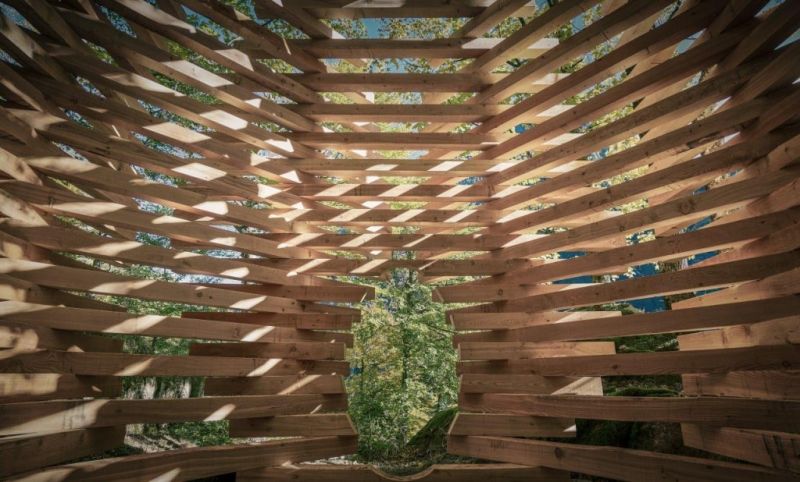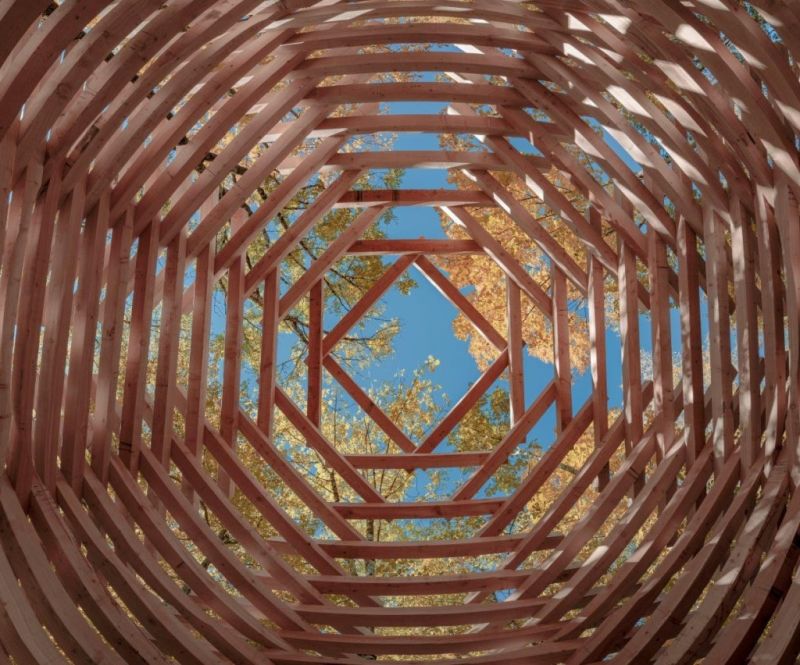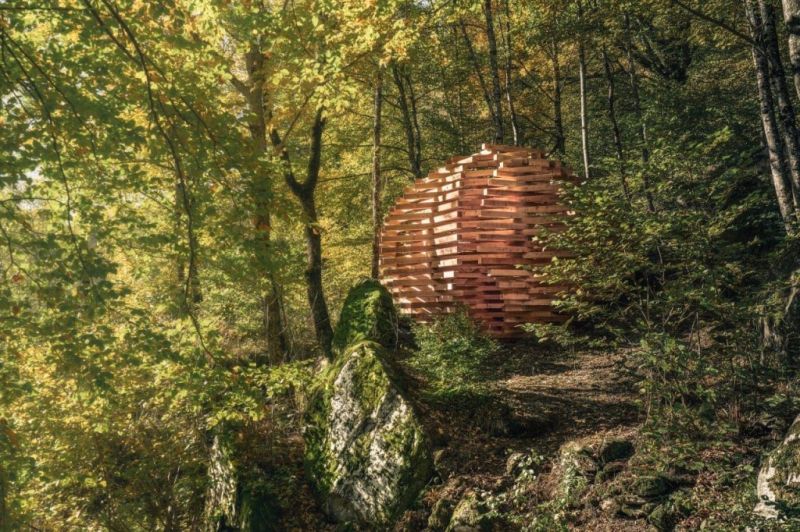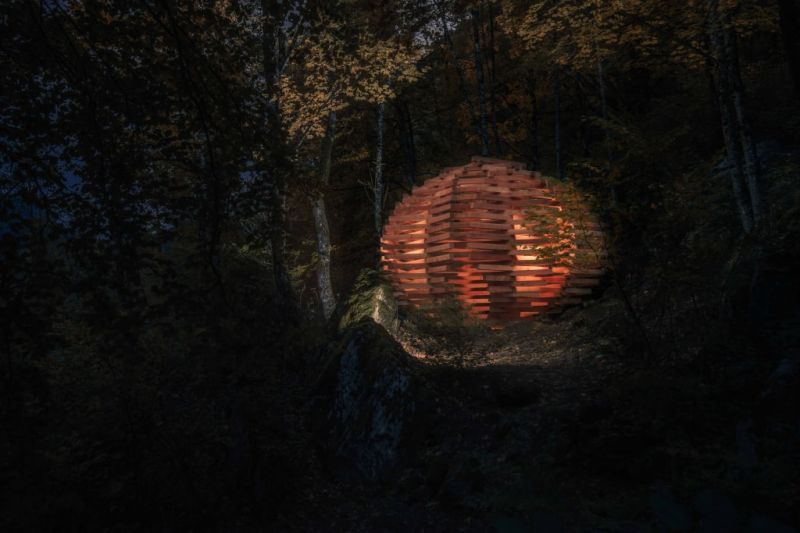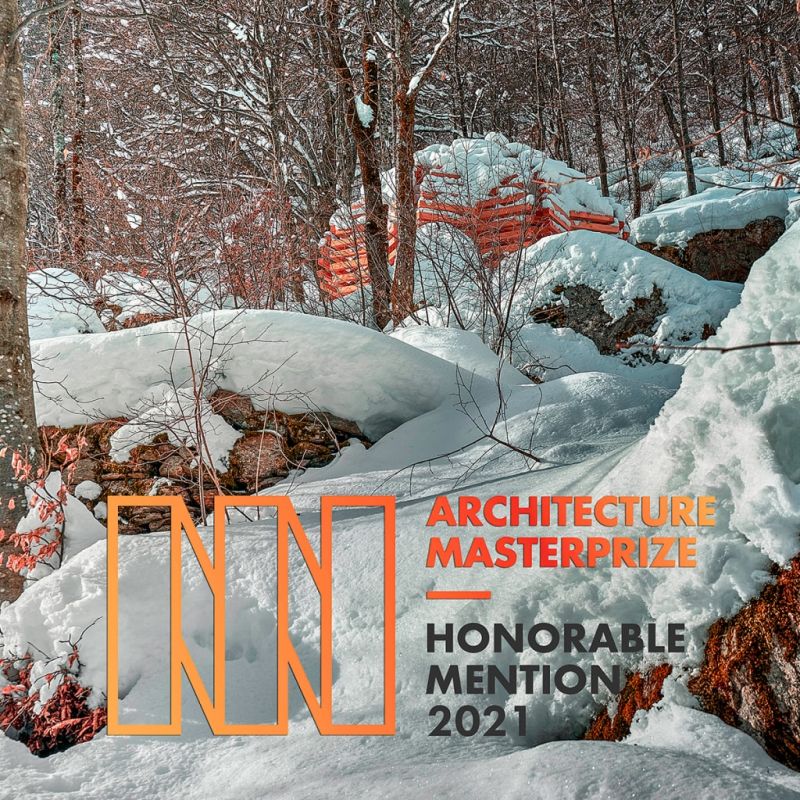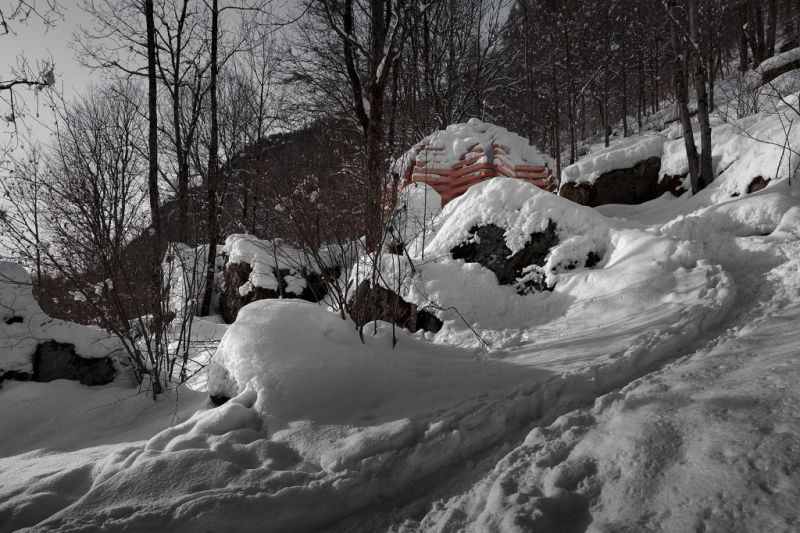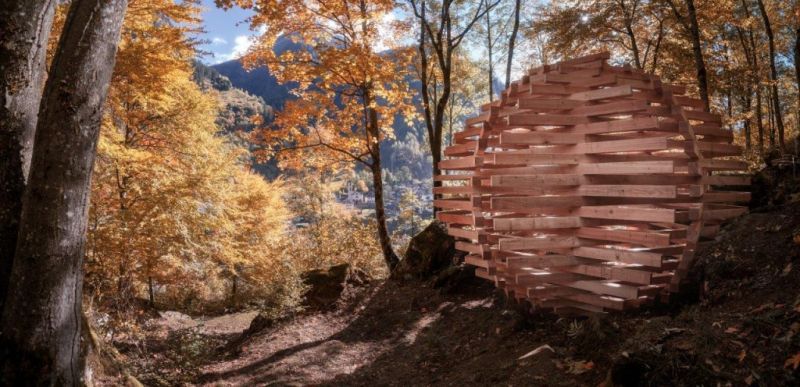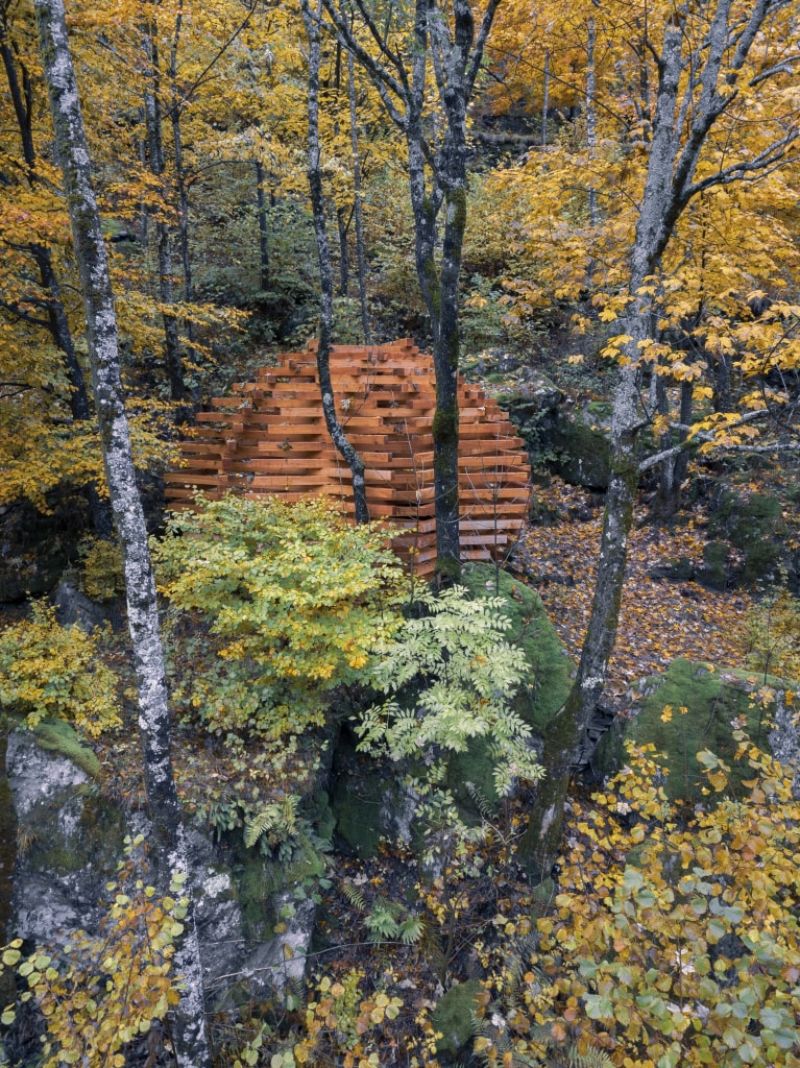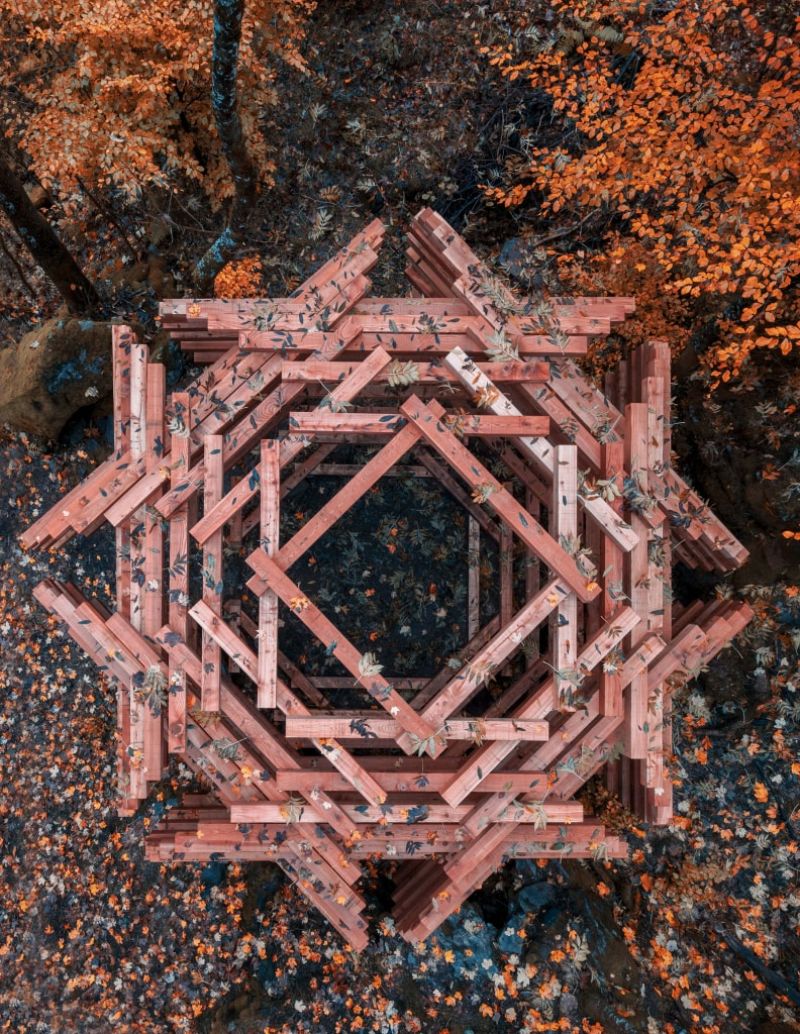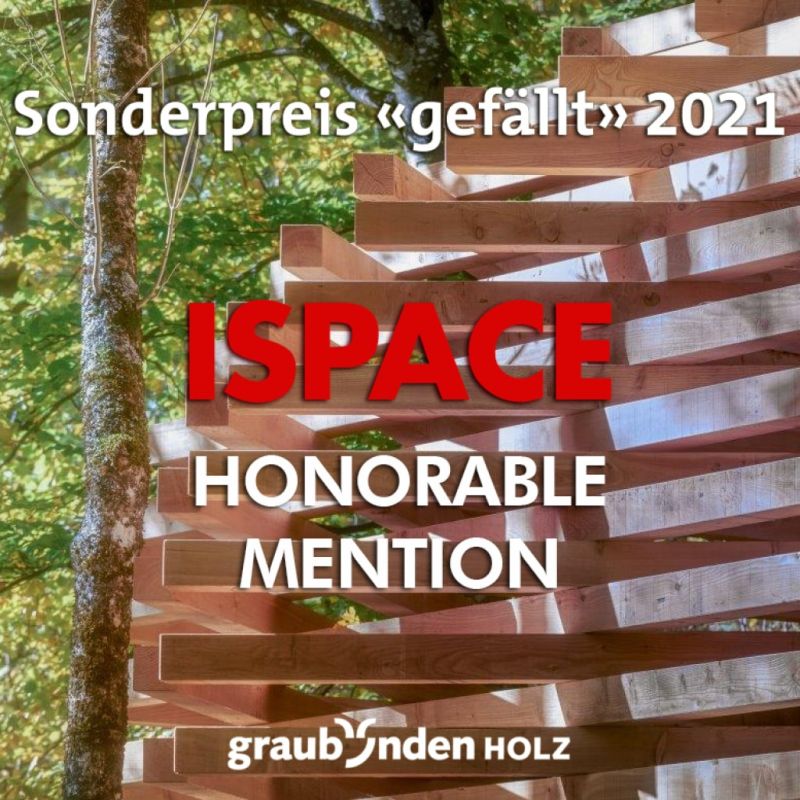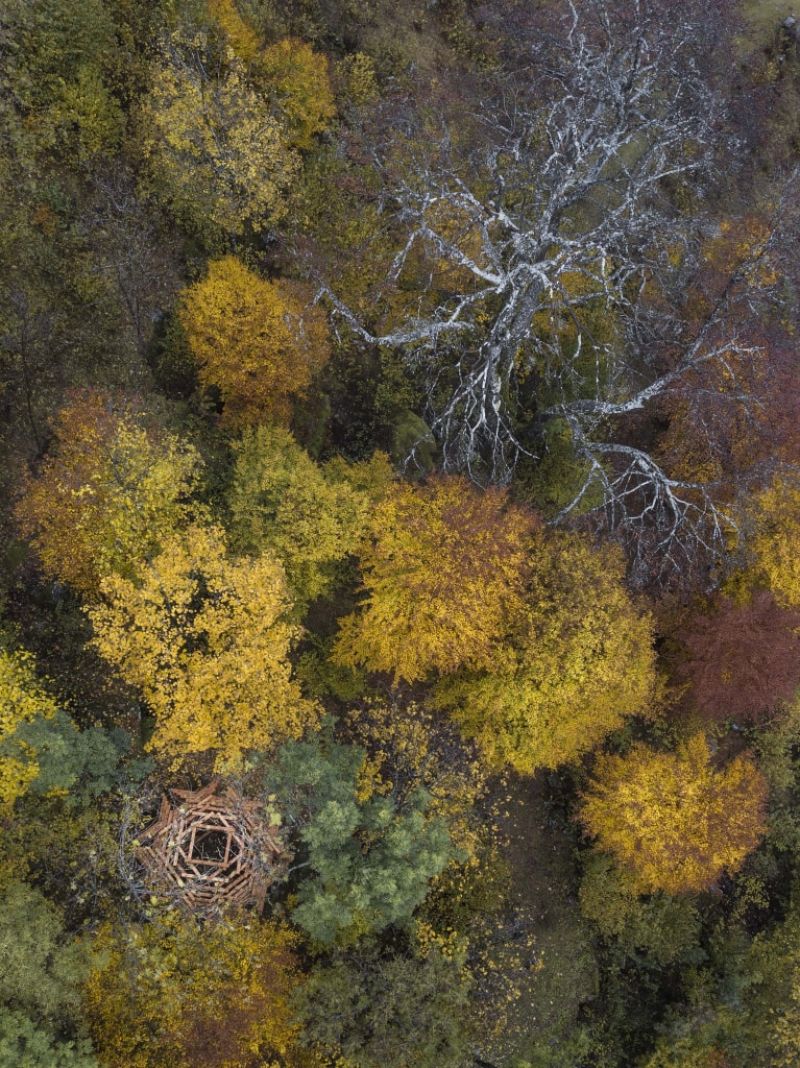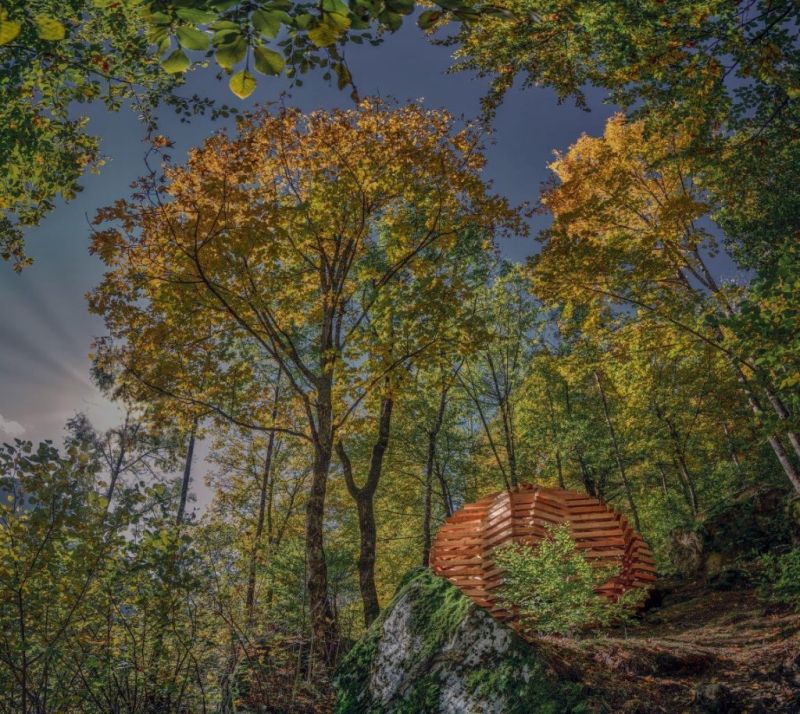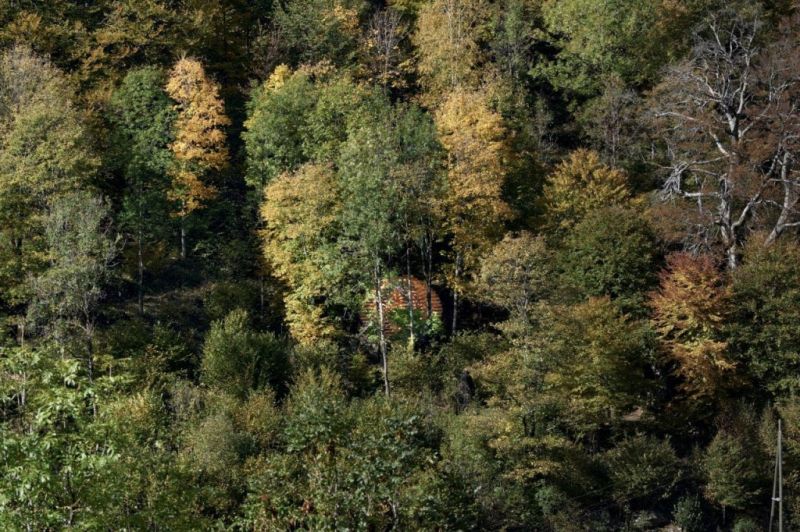ISPACE - 1st completed installation
Nature-Art-Perception-Territory
Spaces to rediscover our belonging to the natural world and
discover the territory through the senses,
in harmony with nature.
ISPACE is a project born out of an idea combining art and architecture in the creation of environments that stimulate people to perceive the influence of a space on their moods. It is a re-evaluation of the territory, allowing us to rediscover our bond with nature.
The project consists of the construction of 10 timber pavillions in the local woods of Rossa. The installation of the first work was completed in October 2020.
Set in the woods of the village of Rossa, in the Calanca Valley, the project, undertaken by Davide Macullo Architects with the support of the RossArte Foundation, the municipality of Rossa and the Swiss National Park Val Calanca has involved the inhabitants of the valley, visitors and institutions in working towards a common goal and contributes to the debate on the enhancement of rural areas. One of the main aims of the RossArte is to foster healthy ambition for social, economic and cultural growth for the future of the region. These pavillions form part of the wider work of the foundation, giving Rossa and Val Calanca an identity as a destination for work and life, as well as for tourism.
The work of Davide Macullo’s studio is centred on the awareness that architecture is the link between the DNA of a place and its future and that every line drawn that becomes a built space can be nourished with reason, passion and joy, that are released once a space is built, giving a sense of discovery and wonder throughout the life of the inhabitants. Engaged in research on the subject of the relationship between man and nature, the architect uses sketches and illustrations to explore the perception of space and scale. The series of drawings ‘man seeking space’ imagine man’s constant search to find the ideal space and scale at which to feel at ease and it is this idea that informs the architecture and has been translated into Ispace.
People have the extraordinary ability to "feel" space through their senses with their eyes closed. The perception of space through the senses is central to the work of the studio, beginning in the 1980s during Macullo’s studies under professor Luis Flotron in Lugano, who made the perception of space his main focus during a lifetime of research. Flotron’s project was called "the Game of the Dove" (Gioco della Colomba). The name derives from the well-known "game of the goose" which sees players advance along the path by throwing dice and guided by chance. The dove also of course refers to the symbol of peace. (Curiously, the cultural centre "La Cascata" in Rossa hosted seminars relating to this project, directed by Professor Flotron in the 1970s)
The research proposed the construction of a labyrinth on three levels, through which a series of spaces were intuitively "discovered", each with different characteristics in order to allow the visitor to confront himself with his states of mind and his psychological characteristics. At the end of the experience, the person completed a questionnaire that functioned as an exercise in introspection, in finding his own psychological balance. This project was never realised and remained on paper.
And so, the Gioco della Colomba returns, with an added dimension, to Rossa and is renamed Ispace; a title that combines Italian and English to emphasise the universal message of the project; is pace - is peace, I space - I space, is pace - is rhythm. Here in Rossa Ispace takes on new meanings as it is rooted in the territory that hosts it and combines the reading of ecology (in its broadest sense) with human ecology, in practical terms through the physicality of installations.
Ecology, in a broad sense, is for the architect the discipline that regulates the inclusion of a work in the context that hosts it. The context of the opera is understood as its geography, orography, climatic condition, history, but also economics and politics as the possibilities of a region to grow sustainably. Human ecology too, lies at the heart of the architect's concerns; as an index of sustainable growth of the inhabitants of the region, not only in numbers but also in the awareness of being protagonists at the forefront of planning for the present and the future of the valley.
The active participation of the inhabitants and institutions of the municipality and the Calanca valley resounds in the words of Bruno Munari: "a civilized people lives in the midst of their art". The sharing of properties and activities is an attitude rooted in the history of the Swiss valleys and in particular in these regions, where from the 12th century the territory was tended to and shared by the community to allow the sustenance of all families through its cultivation.
The intervention in the woods acts to counterbalance the current trend of exponential development of technologies that will alter the way humans build their habitat. The selection of native material; larch trees cut on site to deforest the areas on the slopes of the valley involved in the archaeological restoration of the ancient terraces, is the first sign of sensitivity to the environment and uses the material to the best of its evocative power. The purity of design thinking and the almost absence of particular construction techniques remind us of a work that does not need to declare a temporal condition to emphasize the centrality of the relationship between man and nature.
Ispace is an invitation to discover the paths through the valley and reveals the richness of biodiversity and magic hidden corners of the forest. These new living spaces suggest moments of leisure, meditation, observation and even reflection on the theme that interests us most: how to put man back in tune with nature, to which we belong but from which we also distance ourselves.
We live in an era in which this issue is becoming increasingly pressing and it is the duty as citizens to commit ourselves to the development of our living environment and to leave tangible traces of our civil and cultural commitment to those who will follow.


